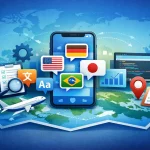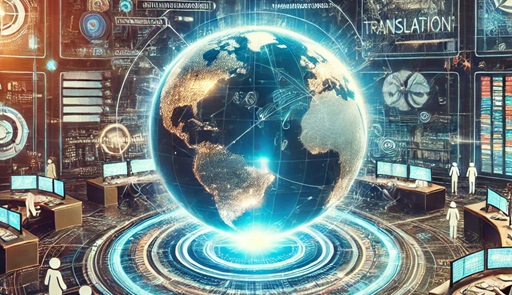Machine translation, the automated conversion of text from one language to another, has a rich history. The field originated during World War II when researchers like Warren Weaver explored cryptographic and linguistic challenges. In 1954, the Georgetown-IBM experiment marked a milestone by translating Russian to English. Early systems, rule-based and limited by linguistic rules, evolved into statistical models in the late 20th century. The 21st century witnessed the dominance of neural machine translation (NMT), leveraging deep learning techniques. Google’s introduction of NLP in 2016 marked a breakthrough, leading to more accurate and context-aware translations, shaping the landscape of cross-language communication.
1949-1965: The Birth of Machine Translation
Between 1949 and 1965, the history of machine translation timeline unfolded as a response to Cold War demands for efficient language translation. Warren Weaver’s influential memorandum in 1949 inspired early research, culminating in the Georgetown-IBM experiment of 1954, which translated Russian to English. Initial efforts focused on rule-based systems, exemplified by IBM’s collaboration with the United States Air Force. The era also saw the emergence of the first-ever machine translation conference in 1952, setting the stage for ongoing collaboration and research. Despite early successes, progress was constrained by computational linguistic complexities, and the underestimation of the intricacies of ideas of human language.
The Early Days of Machine Translation Research
The early days of machine translation (MT) research, spanning the late 1940s to the mid-1960s, were characterized by pioneering efforts to automate language translation. After Warren Weaver’s influential 1949 memorandum, researchers like Warren Weaver and his team at the Massachusetts Institute of Technology (MIT) explored the feasibility of computational translation.
The landmark Georgetown-IBM experiment in 1954 demonstrated the potential, translating Russian to English. As researchers delved into rule-based approaches, notably with the development of the Georgetown-IBM system, optimism surged. However, challenges emerged, including linguistic complexities and the overestimation of the simplicity of translation tasks, leading to a period of skepticism and a shift in focus towards other linguistic pursuits.
1966-1995: Machine Translation Takes Flight
From 1966 to 1995, machine translation (MT) experienced significant advancements and transformations. The early period witnessed the ALPAC report in 1966, which temporarily diminished funding due to skepticism about the feasibility of fully automated word translation. However, research persisted, evolving into rule based systems like SYSTRAN in the 1970s. The 1980s marked the shift towards knowledge-based methods, emphasizing linguistic knowledge and context. IBM’s Candide system and Eurotra project exemplified these efforts. The advent of statistical methods in the 1990s, notably the introduction of the IBM Candide system, laid the groundwork for subsequent breakthroughs, setting the stage for the neural machine translation revolution in the 21st century.
Rule-Based Machine Translation (RBMT) Emerges
Rule-Based Machine Translation (RBMT) emerged as a prominent approach in the evolution of machine translation during the late 20th century. Starting in the 1970s, RBMT systems relied on linguistic rules and grammatical structures to translate text between languages. Pioneering systems like SYSTRAN became widely used, employing extensive linguistic knowledge encoded in rule sets. These rules governed the transformation of source language sentences into target language equivalents. While RBMT demonstrated successes, it faced challenges in handling ambiguity and capturing the nuanced nature of languages. Despite its limitations, RBMT laid the groundwork for subsequent advancements in machine translation methodologies, leading to the development of more sophisticated approaches.
The First Attempt at Direct Machine Translation
The first attempt at direct machine translation can be traced back to the 1950s. One notable effort was the Georgetown-IBM experiment in 1954, where a computer translated 60 Russian sentences into English. Despite limited success, it marked the initial exploration of using machines for language translation, paving the way for future advancements in both translation capabilities and cost-effective language processing solutions. This endeavor also caught the attention of government agencies, highlighting the potential applications of machine translation in various sectors.
1996-2012: Machine Translation on the World Wide Web
From 1996 to 2012, machine translation underwent significant advancements on the World Wide Web. The period saw the emergence of online translation services, such as Google Translate in 2006, enabling users to translate text between multiple languages seamlessly. Improvements in statistical machine translation and the integration of neural networks played pivotal roles, enhancing the accuracy and fluency of translations. As the demand for multilingual words content grew, machine translation became an integral tool for global communication, breaking down language barriers and facilitating cross-cultural interactions. This era laid the foundation for the continued evolution of machine translation technologies in subsequent years.
Introduction of Example-Based Machine Translation (EBMT)
Example-Based Machine Translation (EBMT) emerged as a paradigm shift in the field during the late 1990s. Unlike traditional rule-based or statistical approaches, EBMT relied on a repository of bilingual sentence pairs, treating translation as a matching problem. Introduced as an alternative to rule-based and statistical methods, EBMT leveraged the analogy between new and previously encountered examples to generate translations. By utilizing a database of aligned source and target language examples, EBMT offered flexibility and adaptability in handling diverse linguistic contexts. Though later overshadowed by neural machine translation, EBMT played a crucial role in shaping the trajectory of machine translation research by emphasizing the importance of exemplar-based learning.
Statistical Machine Translation (SMT) Revolutionizes the Field
Statistical Machine Translation (SMT) revolutionized language translation between 1990 and 2010. Unlike rule-based systems, SMT relied on statistical models, analyzing large bilingual corpora to derive translation probabilities. This data-driven approach significantly improved translation quality, marking a transformative era in machine translation before the advent of neural networks. SMT laid the groundwork for subsequent advancements in automated language translation technologies.
2013-Present: The Age of Neural Machine Translation (NMT)
The period from 2013 to the present has been characterized as the Age of Neural Machine Translation (NMT). NMT revolutionized language translation by employing artificial intelligence to enhance the accuracy and fluency of translations. This approach, particularly powered by deep learning models, marked a significant departure from traditional rule-based and statistical methods. NMT systems, such as Google’s Transformer model, demonstrated remarkable improvements in capturing context, syntax, and semantics, resulting in more natural and contextually relevant translations across various languages. The widespread adoption of NMT has played a pivotal role in breaking down language barriers, facilitating global communication, and fostering advancements in cross-cultural understanding.
The Rise of Google Translate (since 2016)
Google Translate’s ascent to prominence as a widely used and potent natural language translation engine has been rapid since 2016. With the use of neural machine translation (NMT), one of the most recent developments in machine learning, Google Translate has dramatically increased translation quality and now provides more complex and contextually appropriate results. The introduction of the Transformer model in 2017 marked a turning point, enabling Google Translate to handle complex linguistic structures and idiomatic expressions with greater finesse.
Advances in Neural Machine Translation (NMT)
Advances in Neural Machine Translation (NMT) have propelled translation accuracy, leveraging deep learning and models like Transformers. These improvements enhance contextual understanding, syntactic precision, and idiomatic expression, making NMT a cornerstone in overcoming language barriers and fostering global communication.
Machine Translation’s Role in Today’s World
Machine translation plays a pivotal role in today’s interconnected world by facilitating seamless communication, breaking down language barriers in real-time, and promoting cross-cultural collaboration. In fields like business, diplomacy, and academia, machine translation tools enhance accessibility and enable efficient information exchange across diverse linguistic landscapes.
Conclusion
In conclusion, the period from 2013 to the present has witnessed a transformative era in language translators, marked by the ascendancy of Neural Machine Translation (NMT). With the advent of advanced models like Transformers, exemplified by Google Translate’s remarkable evolution since 2016, language barriers have been significantly diminished. These technological strides in NMT have not only enhanced translation accuracy but also fostered unprecedented global connectivity.
Reference
- https://www.techtarget.com/searchenterpriseai/definition/machine-translation
Subtitles

Professional and Accurate Subtitle Services for your Videos.
- Video subtitles specifically tailor-made for improving accessibility.
- Using highly experienced subtitlers with years of industry experience.
- Professionally written and expertly timed.
Translation

We help the world’s top companies translate their content in over 73 languages!
- We localize content for internet websites, games, travel, cryptocurrencies, and more
- Expand your global audience by adding different languages.
- We work only with qualified translators and experienced content creators
Audio translation

Ensuring full accessibility for Blind and visual impaired audiences.
- Visual descriptive events as they occur in the video.
- Working with top audio describers to perfectly describe what is happening on-screen
- Professional sound recording.












